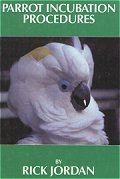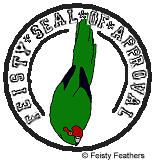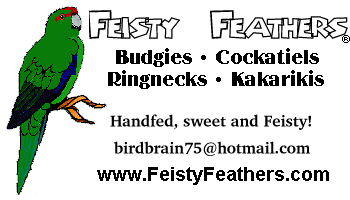 
|
Here are two books that belong in every breeder's library. The first
is by Rick Jordon and tells you just about everything you need to know about eggs and how to hatch
them. Chapters include: The Egg (the physiology of the egg itself and how it is formed),
Aviculture as a Prelude to Incubation (Basic Breeding info), Preparing for Incubation (getting
your equipment and records ready), Candling and Repairing Eggs (how to spot abnormalities through
candling, how to fix shell problems), Incubating Eggs (temperature, humidity, ventilation,
turning, etc.), Egg Weight Management (weight loss in eggs), Hatching and Hatching Assistance
(pipping, problems that arrise during hatching), Using Chickens as Natural Incubators (why
you may want to use chickens, how to use them), Learning from your Mistakes (finding out what
what killed a chick and how to prevent it from happening again). It also contains several
appendixes with charts on things such as desired weight loss and incubation periods.
The second book is by both Howard Voren and Rick Jordon and tells you everything you need to know about
rearing chicks after they hatch. Chapters include: Managing the Nursery (proper set-up and
function), Maintenance of Nestlings (temperature, light, humidity, bedding, etc.), Formulas
(recipes, sterilization, storage, heating, digestion, supplements), Feeding Instructions and
Methods (feeding utensils), Feeding (quantity, temperature, feeding response, frequency, how to
feed), Weight Monitoring (daily weight gains and losses), Non-Dietary Factors that Control Weight
Gain (things that may cause your bird to loose too much weight), Potential Health Problems in the
Nursery (Murphy's Law and all the different ways you'll see it, largest chapter), Non-Pathogenic
Death (what are you doing wrong?), Medical Procedures for the Aviculturist (basic medical
techniques you can use to aid chicks), Weaning (how to wean, when does it occur,
potential problems, imprinting, weight loss). Both books make handy reference guides and
contain information that can be used for almost every species. No breeder should be without them.
__________________________________________ |
 |


